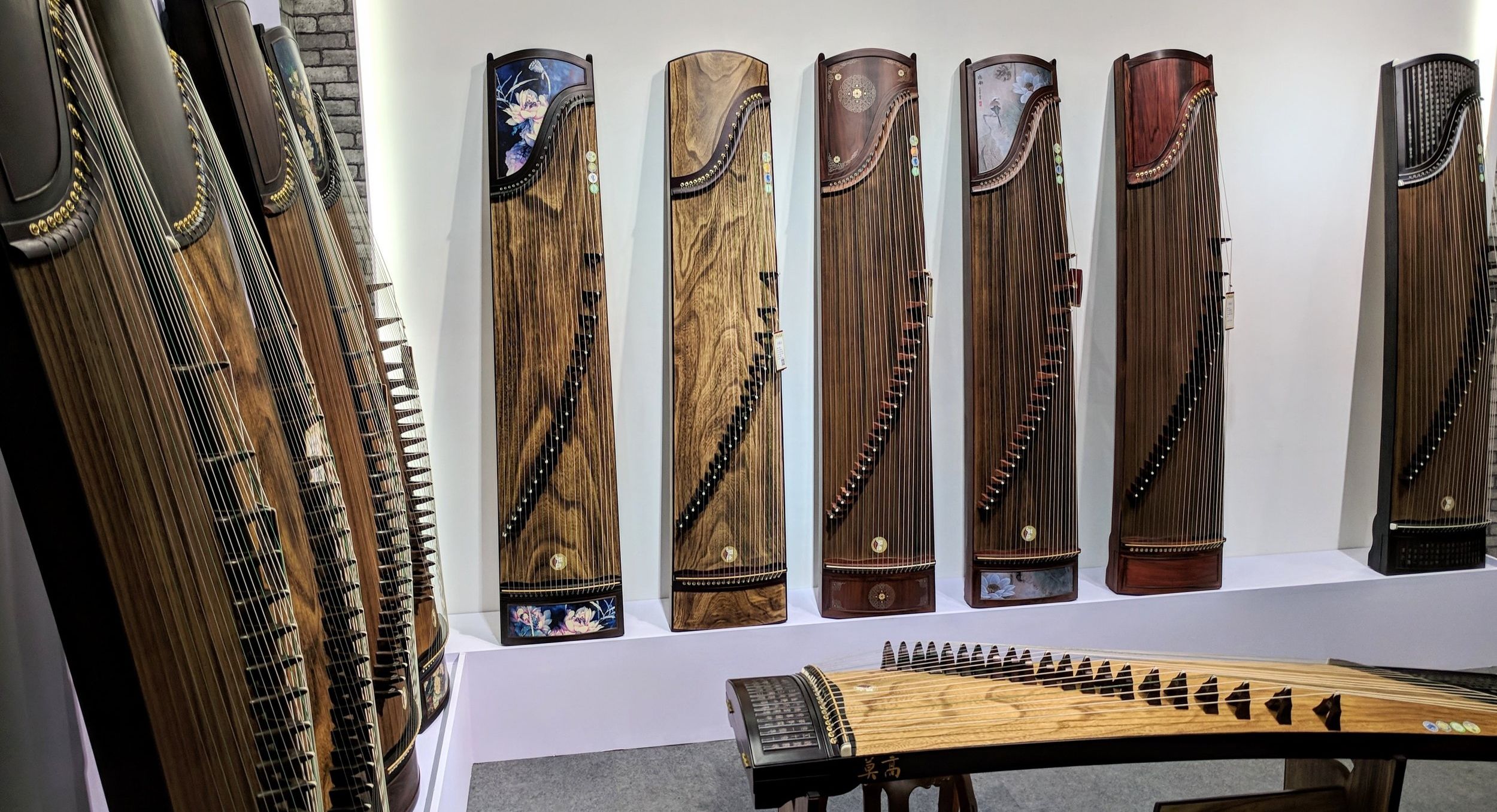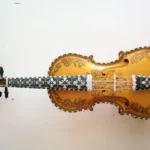
The Guzheng, a traditional Chinese musical instrument with roots stretching back over 2,500 years, embodies the rich cultural tapestry of China. From its ancient origins during the Warring States period to its contemporary presence on the global stage, the Guzheng has played a profound role in shaping the musical heritage of China. This zither instrument, with its distinctive pentatonic scales and intricate construction, has not only witnessed the ebb and flow of dynasties but has also evolved alongside the changing cultural landscape. In this exploration, we delve into 25 historical facts and numerical trivia about the Guzheng, uncovering the instrument’s journey through time, its influence on various art forms, and its enduring significance in the world of music.
Ancient Roots: The Guzheng’s roots extend over 2,500 years, tracing back to China’s Warring States period (475–221 BCE). Its ancient origins reflect the instrument’s enduring significance in Chinese culture, having witnessed and contributed to the evolution of musical expression over millennia. As a testament to its longevity, the Guzheng has weathered dynastic changes, social transformations, and technological advancements, standing as a symbol of cultural continuity.
Evolution of the Name: The term “Guzheng” itself carries historical weight, with its first appearance in records dating back to the Qin dynasty (221–206 BCE). The very naming of the instrument reflects the meticulous documentation and categorization of cultural artifacts during ancient times. This early nomenclature showcases the Chinese people’s commitment to preserving their rich heritage and lays the linguistic groundwork for future generations to understand and appreciate the instrument.
Zither Family Member: Within the vast tapestry of musical instruments, the Guzheng holds a distinguished place as a member of the zither family. This familial connection underscores the instrument’s regional and cross-cultural influence, as zithers can be found in various forms across Asia. Understanding the Guzheng in the context of this broader family highlights both its unique qualities and its shared musical heritage with neighboring cultures.
Number of Strings: The modern Guzheng features 21 strings, a number that has become standard. However, delving into historical variations reveals a dynamic evolution in the instrument’s design, with earlier versions sporting different string counts, such as 16 and 25 strings. This numerical flexibility underscores the adaptability of the Guzheng over time, allowing it to cater to diverse musical styles and preferences across different eras.
Tuning System: The Guzheng’s tuning system is a key aspect of its distinctive sound. Strings tuned to pentatonic scales provide the instrument with a unique melodic character that resonates deeply with traditional Chinese music. This tuning system reflects not only the technical prowess of instrument makers and musicians but also the cultural philosophy embedded in the musical tradition, creating a harmonious bridge between the instrument and the cultural ethos it represents.
Materials: Traditional Guzhengs were crafted from materials that encapsulate the historical and geographical context of their creation—wood and silk strings. The combination of these materials not only contributed to the instrument’s resonance and tonal quality but also represented the craftsmanship of artisans who transformed natural elements into artistic expressions. The contemporary shift towards wood and metal strings signifies a harmonious blend of tradition and innovation, showcasing the instrument’s adaptability to changing times.
Famous Historical Players: Wei Zhongle, a legendary Guzheng player from the Tang Dynasty, stands as a foundational figure in the instrument’s history. His mastery and contributions to Guzheng music during this early period shaped the trajectory of the instrument’s development. Wei Zhongle’s legacy underscores the deep roots of the Guzheng in Chinese history and its integral role in the cultural tapestry of ancient dynasties.
Influence on Poetry: The Guzheng’s cultural significance extends beyond its musical prowess, permeating the realms of literature and poetry. Throughout Chinese history, poets have often used the instrument as a metaphor for elegance, refinement, and the timeless beauty of classical Chinese culture. By weaving the Guzheng into the fabric of poetic expression, artists have elevated the instrument to a symbol of artistic sophistication, making it an integral part of the nation’s aesthetic identity.
Popularization in the Tang Dynasty: The Tang Dynasty served as a cultural crucible for the Guzheng, propelling it into the forefront of Chinese musical tradition. The imperial court’s patronage and the instrument’s popularity among the aristocracy facilitated its widespread adoption. During this period, the Guzheng evolved not only as a musical instrument but also as a symbol of social status and cultural sophistication, laying the groundwork for its enduring prominence in subsequent dynasties.
Cultural Symbolism: The Guzheng, beyond its musical functionality, has become a symbol deeply ingrained in the cultural fabric of China. Its presence in various artistic forms, from paintings to literature, reinforces its role as a cultural emblem. The symbolism associated with the Guzheng transcends its musical notes, embodying the grace, refinement, and cultural identity of the Chinese people, making it an enduring and revered symbol of China’s artistic heritage.
Ming and Qing Dynasties: The Ming (1368–1644) and Qing (1644–1912) dynasties marked pivotal periods for the Guzheng. During the Ming Dynasty, the instrument underwent further refinements in construction and playing techniques. The subsequent Qing Dynasty saw the Guzheng adapting to the changing socio-political landscape, reflecting the dynasty’s distinct cultural characteristics. As a witness to these historical shifts, the Guzheng not only reflected the musical preferences of each era but also became a mirror reflecting the broader cultural and artistic changes during these dynastic transitions.
Modern Variations: In the contemporary era, the Guzheng has experienced a metamorphosis with the advent of modern variations, including electric versions. These innovative adaptations incorporate amplification and electronic effects, expanding the instrument’s sonic possibilities and allowing it to seamlessly integrate into diverse musical genres. This modernization reflects the instrument’s resilience and ability to embrace new technologies while preserving its cultural roots, ensuring its continued relevance in an ever-changing musical landscape.
Notable Guzheng Compositions: “Spring on a Moonlit River” (春江花月夜) stands as one of the most famous traditional Guzheng compositions. Composed during the Tang Dynasty, this piece captures the essence of Chinese classical music, portraying the beauty of nature through melodic intricacies and rhythmic elegance. Its enduring popularity speaks to the timeless appeal of the Guzheng as a medium for expressing the profound connections between music, nature, and human emotions.
Guzheng in Chinese Opera: The Guzheng has played a crucial role in traditional Chinese opera, providing a melodic backdrop to vocal performances. Its incorporation into the operatic tradition adds depth and emotional resonance to the storytelling, illustrating the Guzheng’s versatility as an accompaniment instrument. Through its association with Chinese opera, the Guzheng continues to contribute to the vivid tapestry of theatrical arts, ensuring its cultural relevance in performance arts.
International Influence: The international influence of the Guzheng has transcended cultural boundaries. Today, the instrument is played by musicians around the world, contributing to a global appreciation for traditional Chinese music. Its cross-cultural appeal signifies the Guzheng’s ability to serve as a cultural ambassador, fostering understanding and appreciation between diverse musical traditions.
Recorded History: The Guzheng’s recorded history can be traced back to the “Cyclopedia” written by music theorist Chen Yang during the Sui Dynasty (581–618). This early documentation highlights the significance of the Guzheng in ancient Chinese society and underscores the meticulous preservation of musical knowledge. Chen Yang’s contribution laid the groundwork for future generations of musicians, ensuring a continuous thread of cultural inheritance.
Ming-Qing Transition: The transition from the Ming to the Qing Dynasty marked a critical juncture for the Guzheng, mirroring the sociopolitical shifts of the time. As China underwent profound changes, so too did the musical landscape. The Guzheng, adapting to the evolving cultural milieu, reflected the complex interplay between tradition and innovation, providing a sonic narrative of the historical and cultural dynamics during this transitional period.
Emperor Kangxi’s Support: Emperor Kangxi’s support during the Qing Dynasty played a pivotal role in the continued development and recognition of the Guzheng. His patronage of the arts, including musical traditions, fostered an environment where the instrument could thrive. This imperial endorsement not only elevated the Guzheng’s status within the cultural hierarchy but also contributed to its enduring legacy as an instrument deeply intertwined with imperial court aesthetics.
Construction Techniques: The construction of the Guzheng involves precise woodworking techniques, with intricate carvings and decorations often adorning the instrument. These embellishments not only enhance the instrument’s visual appeal but also showcase the craftsmanship and artistry of those involved in its creation. The marriage of technical precision and artistic expression in Guzheng construction reflects a harmonious blend of form and function, contributing to the instrument’s status as a work of art.
International Competitions: The existence of international competitions dedicated to the Guzheng underscores its global recognition and appeal. These competitions provide a platform for showcasing the instrument’s versatility, fostering healthy competition, and promoting the exchange of musical ideas. Through participation in such events, Guzheng players contribute to the instrument’s evolving narrative on the world stage, reinforcing its position as a cultural treasure with international significance.
Influence on Contemporary Music: The Guzheng’s influence has transcended traditional boundaries, making its mark on contemporary music genres. Musicians have embraced the instrument in various modern settings, including pop, rock, and fusion. Its unique timbre and expressive capabilities have allowed the Guzheng to bridge the gap between classical and contemporary, contributing to a vibrant and evolving musical landscape.
Longest Guzheng Performance: While specific records may vary, instances of marathon Guzheng performances lasting several hours have been documented. These feats not only showcase the endurance and skill of the performers but also emphasize the Guzheng’s capacity for sustained artistic expression. Long-duration performances become a testament to the instrument’s versatility, capturing the attention of audiences over extended periods.
Modern Innovations: Contemporary musicians and composers continually push the boundaries of Guzheng music through innovative techniques and styles. Experimentation with different playing methods, extended techniques, and collaborations with other instruments showcase the instrument’s adaptability. These modern innovations contribute to the ongoing evolution of Guzheng music, ensuring its relevance in the ever-changing landscape of contemporary music.
Notable Guzheng Players Today: In the contemporary music scene, several Guzheng players have gained international recognition. Figures such as Zhang Yan, Zhao Yanchun, and Liang Wentao exemplify the instrument’s contemporary appeal. Their artistry not only preserves traditional techniques but also contributes to the expansion and modernization of Guzheng music, reinforcing the instrument’s position in the global musical panorama.
Educational Significance: Guzheng holds a significant place in music education, both in China and internationally. It is taught in Chinese music schools, ensuring the transmission of traditional playing techniques and cultural nuances to new generations. The educational focus on the Guzheng not only preserves the instrument’s rich heritage but also fosters a deep understanding of Chinese musical traditions, thus securing its legacy for the future. As an educational tool, the Guzheng becomes a conduit for cultural exchange, enabling students worldwide to engage with and appreciate the depth of traditional Chinese music.








